Author: Prof. Dr. Houman Jalaie
Institution: Department of Vascular and Endovascular Surgery, European Venous Center, University Hospital Aachen, Germany
Summary
This presentation explores optimal treatment strategies for patients with extensive chronic venous obstruction (CVO), focusing on the application of endoscopic surgery, vascular reconstruction, and hybrid surgical techniques. The study demonstrates that while both endoscopic surgery and hybrid surgery show similar patency rates in treating femoral vein obstruction, endoscopic surgery offers fewer postoperative complications and shorter hospital stays.
Classification of Chronic Venous Obstruction
• Classification Standards: CVO is classified based on the degree of luminal narrowing (>50% luminal stenosis) caused by post-thrombotic trabeculae formation. Patient classifications range from Class I to Class V, with obstructions potentially extending to the femoral vein and other major veins.
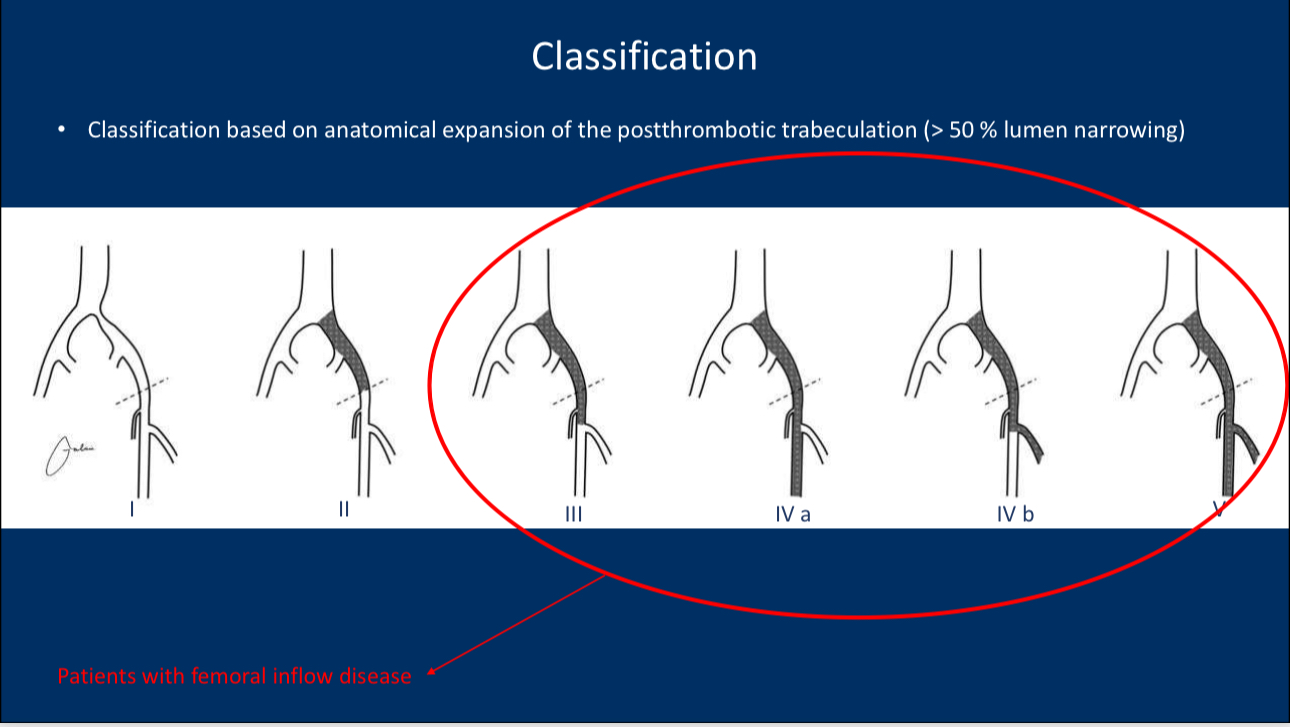
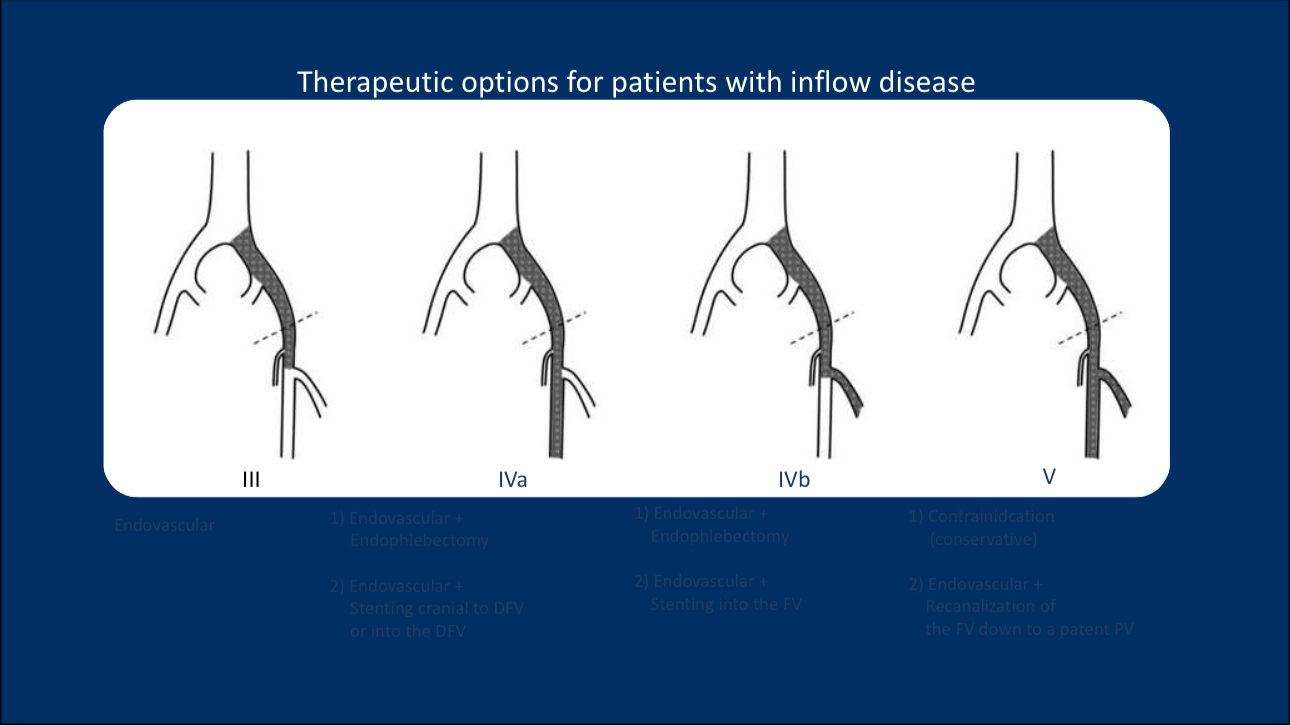
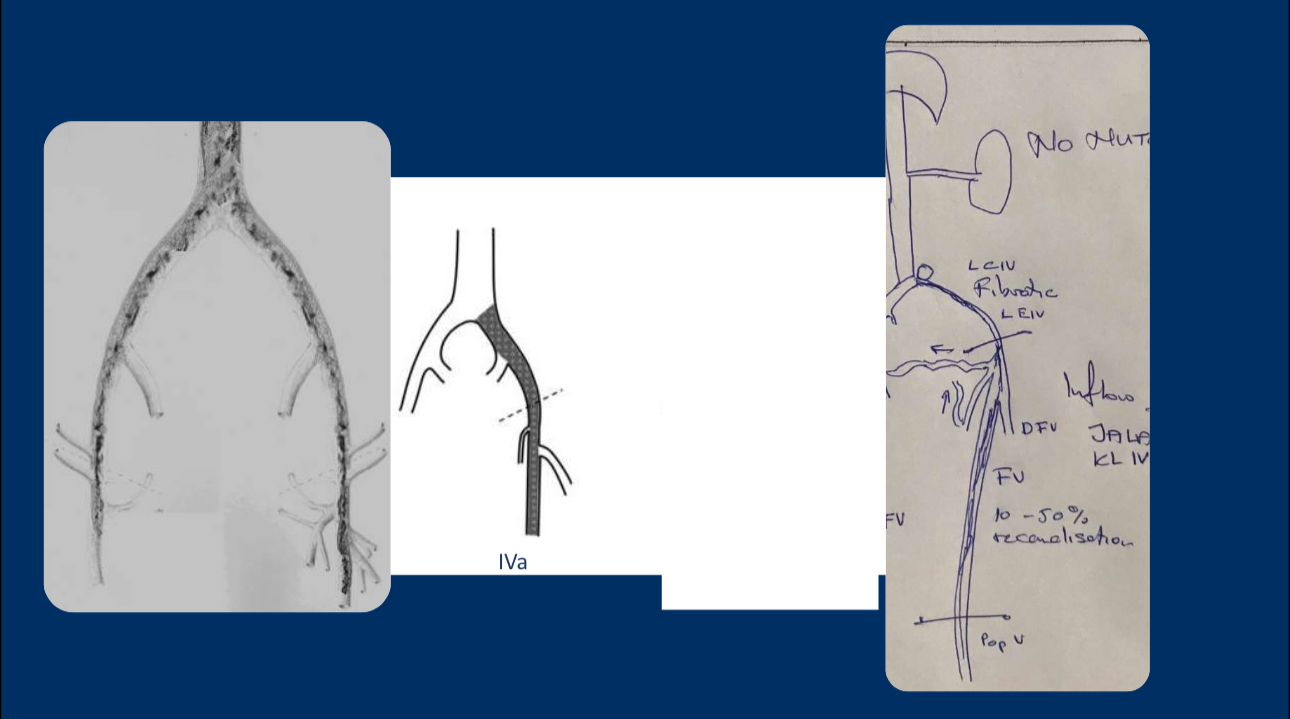
Treatment Options
• Endoscopic Surgery and Vascular Reconstruction: A combination of endoscopic surgery and vascular reconstruction is a primary treatment option for CVO patients, particularly when femoral vein obstructions cannot be resolved by endoscopy alone. In complex cases, such as trabecular obstructions in the great saphenous vein, endoscopic surgery combined with angioplasty can effectively restore blood flow.
• Advantages of Endoscopic Surgery: Compared to hybrid surgery, endoscopic treatment involves shorter operative times, fewer complications, and faster recovery. For patients with femoral vein disease, endoscopic surgery should be the first-line treatment unless the obstruction is too complex for endoscopic resolution.
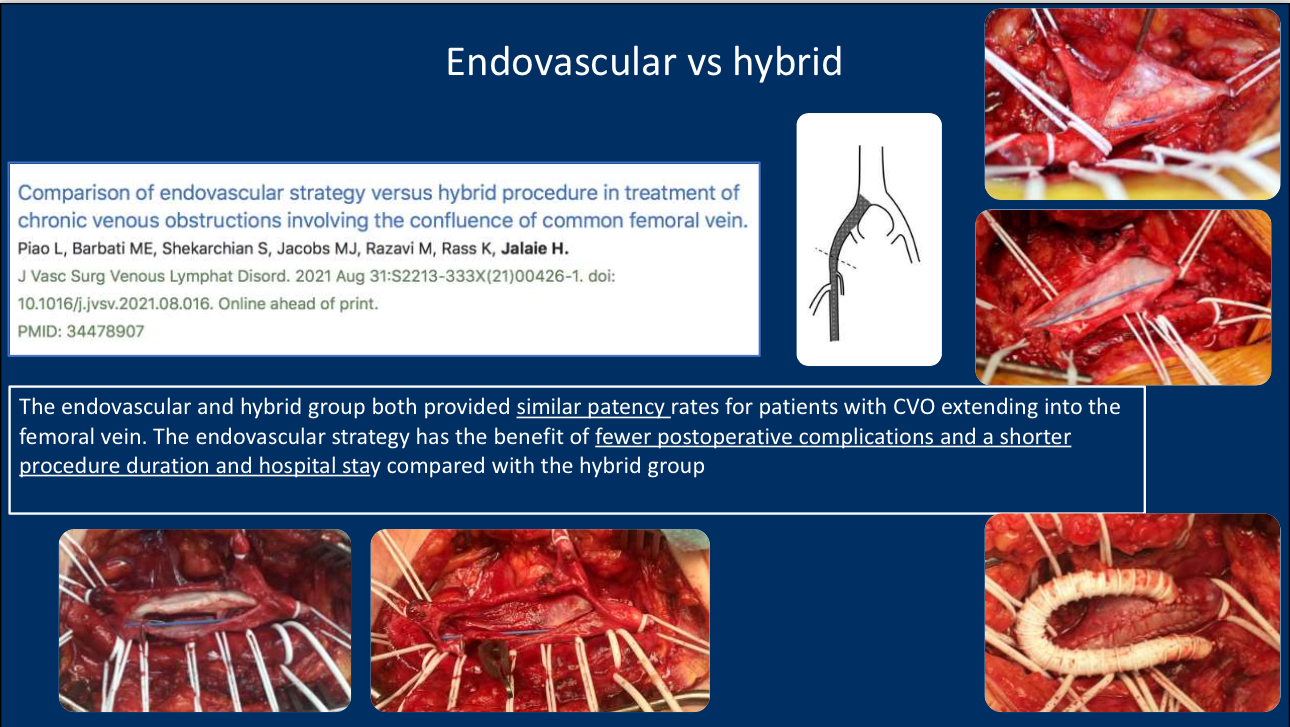
Clinical Case Studies
•Case 1: Obstruction between the femoral and deep veins: During endoscopic surgery, IVUS revealed trabecular obstruction in front of the main inflow vein. After angioplasty, the trabeculae were successfully broken, and normal blood flow was restored.
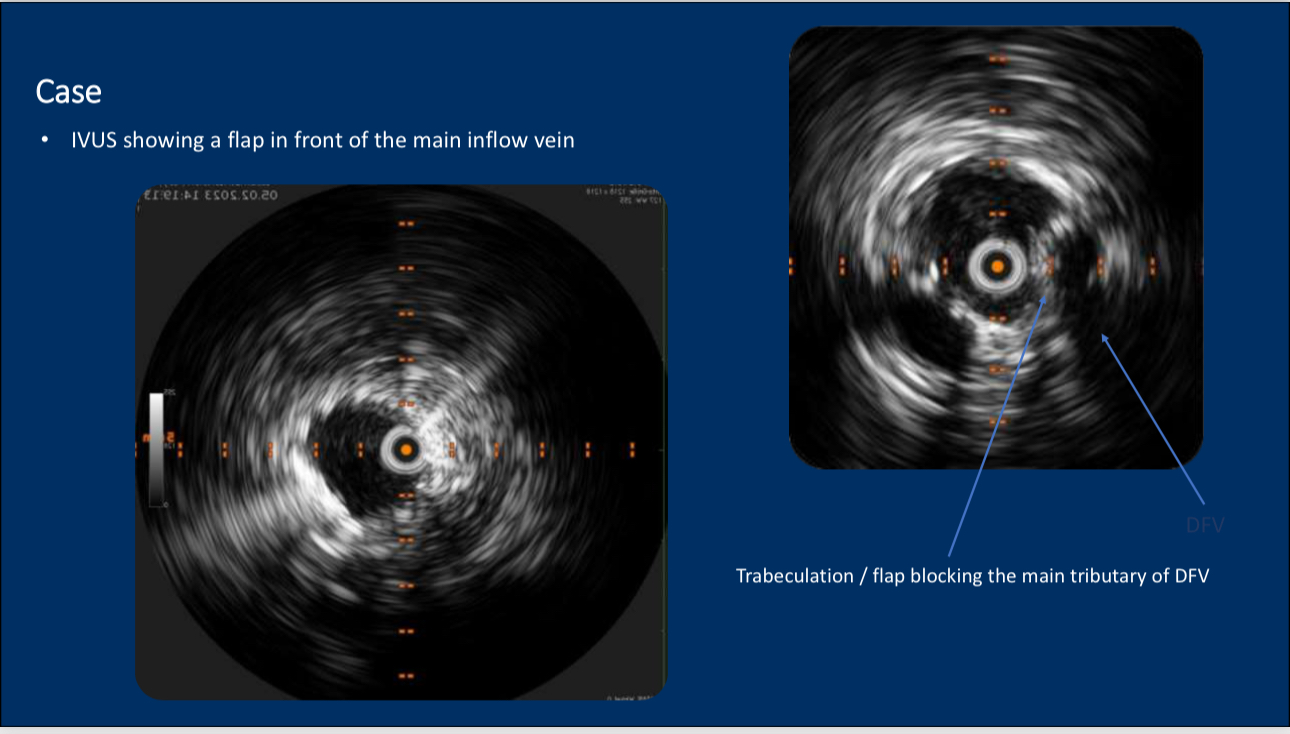
•Case 2: Angioplasty under IVUS guidance: IVUS identified trabecular obstruction at the main inflow vein. Endoscopic surgery and angioplasty successfully cleared the obstruction, with no recurrence of occlusion post-surgery.
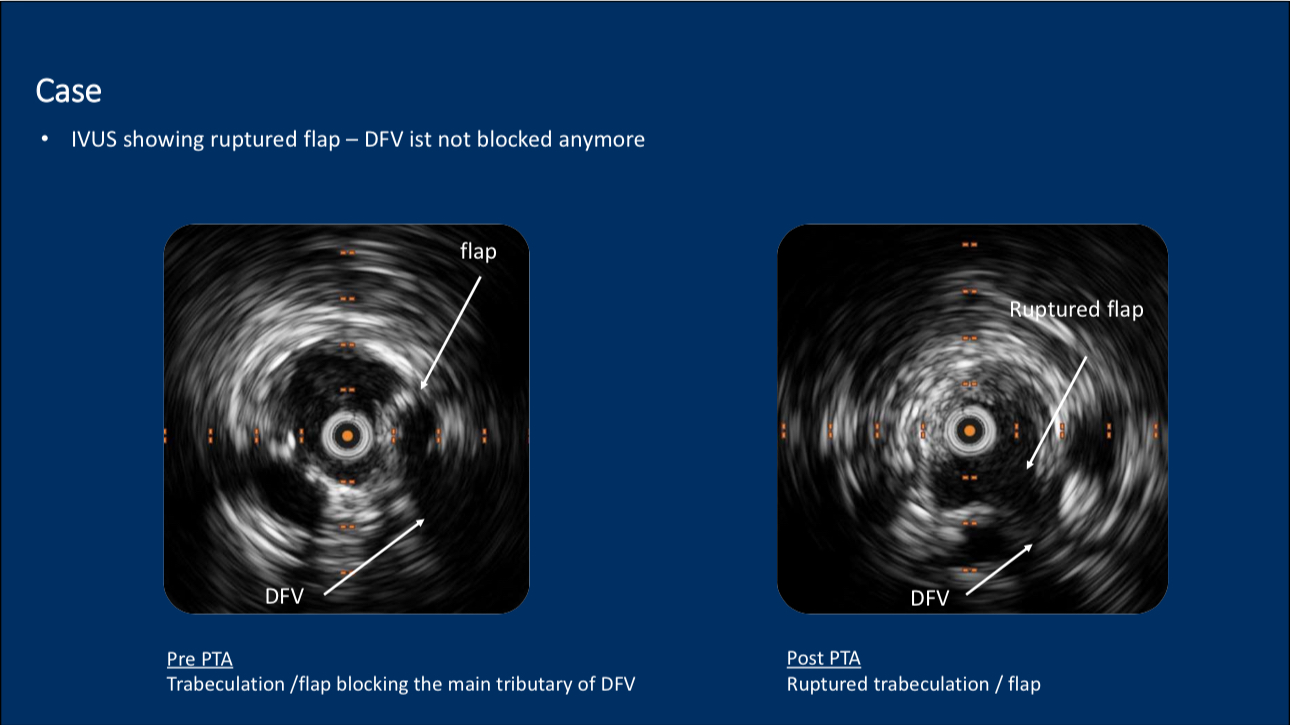
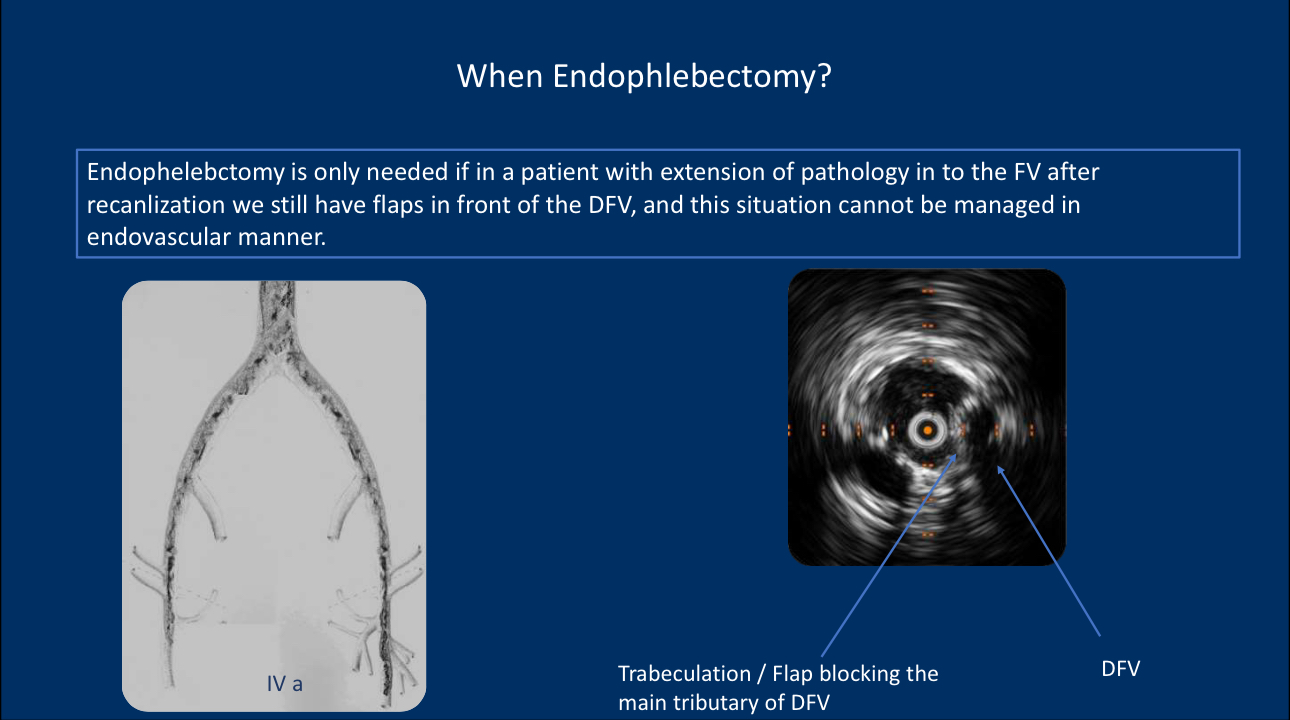
Conclusion
1. For patients with extensive chronic venous obstruction affecting the femoral and deep veins, endoscopic surgery should be the first-choice treatment, particularly for cases where blood flow can be restored with endoscopic techniques and angioplasty.
2. Hybrid surgery, though sometimes necessary for complex cases, should be reserved as a secondary option when endoscopic treatment fails.
3. Decisions should be based on precise IVUS imaging to ensure a thorough preoperative understanding of the obstruction, minimizing postoperative complications.
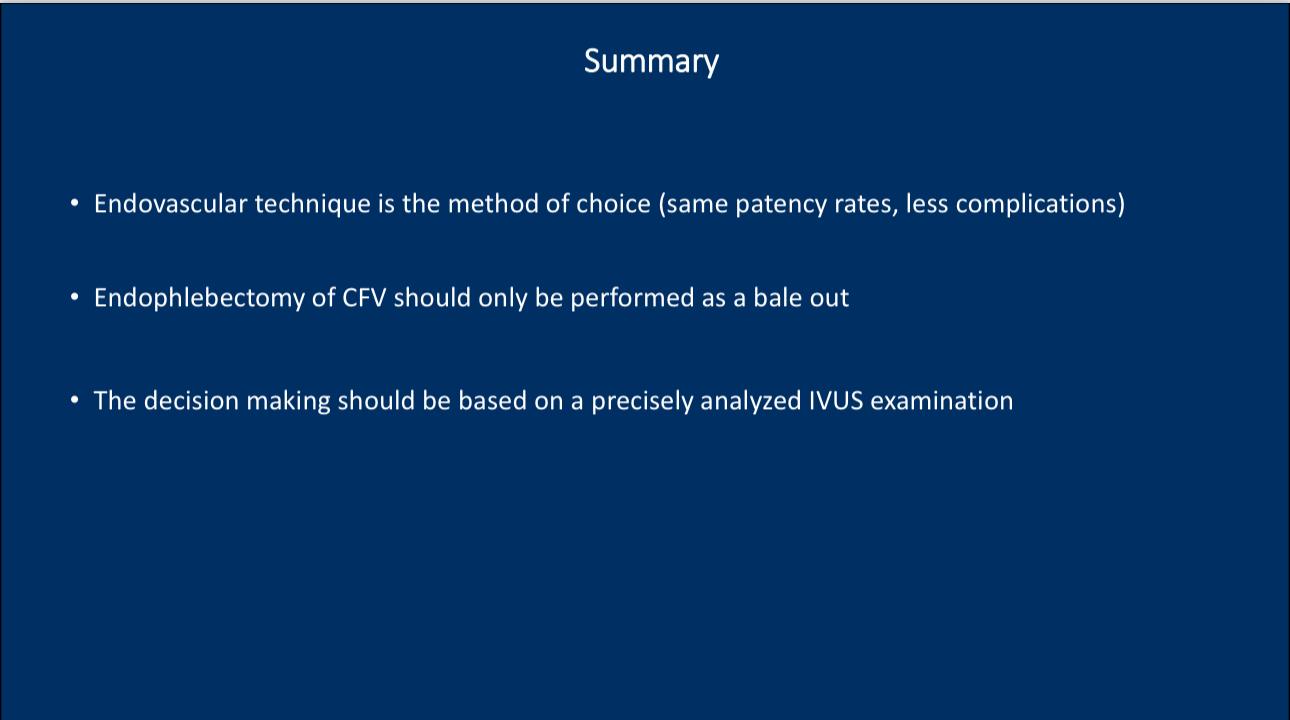
Contact Us
•Email: endovascluar@simtomax.cn
More international information available at:
•Facebook: Vasco Knight
•Instagram: knight_vasco
Let’s safeguard health together and showcase your brilliance to the world!


